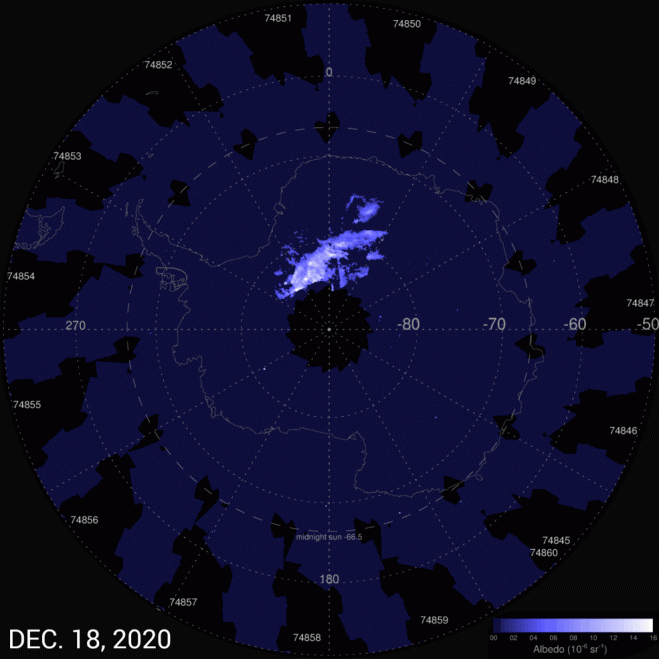
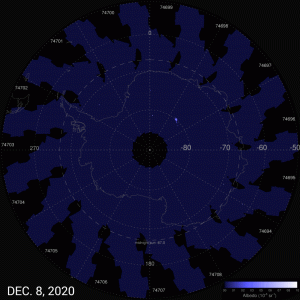
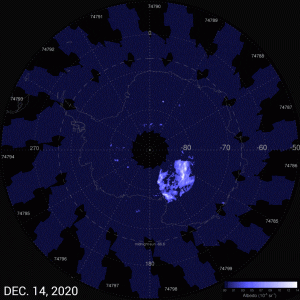
These AIM images span Dec. 8-18, 2020, starting with AIM’s first observations of the Antarctic noctilucent cloud season. The colors indicate the clouds’ albedo, which refers to the amount of light that a surface reflects compared to the total sunlight that falls upon it. Things that have a high albedo are bright and reflect a lot of light. Things that don’t reflect much light have a low albedo, and they are dark. (Credit: NASA/HU/VT/CU-LASP/AIM/Joy Ng)
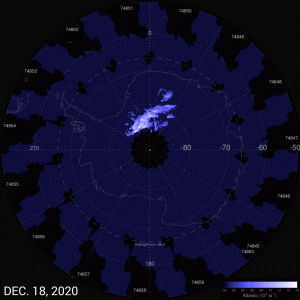
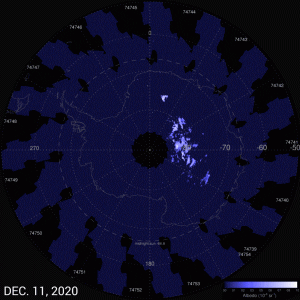 Summer in Antarctica is marked by days in which the Sun never sets, balmy temperatures that hover as high as freezing, and electric-blue clouds of ice.
Summer in Antarctica is marked by days in which the Sun never sets, balmy temperatures that hover as high as freezing, and electric-blue clouds of ice.
NASA’s Aeronomy of Ice in the Mesosphere mission (AIM) spotted the summer’s first noctilucent, or night-shining, clouds on Dec. 8, 2020. In the days that followed, the fine wisps of cloud slowly grew into slight puffs high over Antarctica. Typically, they spin like cotton candy into a mass that blankets the poles, but this season is off to a slow start, and the clouds are sparser than usual. The season is also a late one: Scientists usually expect the Antarctic ice clouds to appear sometime in mid-November and run through mid-February.
The brilliant blue and white clouds drift about 50 miles overhead in a layer of the atmosphere called the mesosphere. During summer, this region has all three ingredients the clouds need to form: extremely cold temperatures (at -215 degrees Fahrenheit, it’s the coldest part of the atmosphere), water vapor and meteor dust.
In summer, the mesosphere is most humid, since relatively wet air circulating up from the lower atmosphere brings extra water vapor. Meteor dust comes from meteors, which are ground into dust when they plummet and burn through the atmosphere. Noctilucent clouds form when water molecules coalesce around the fine, otherworldly dust and freeze.
